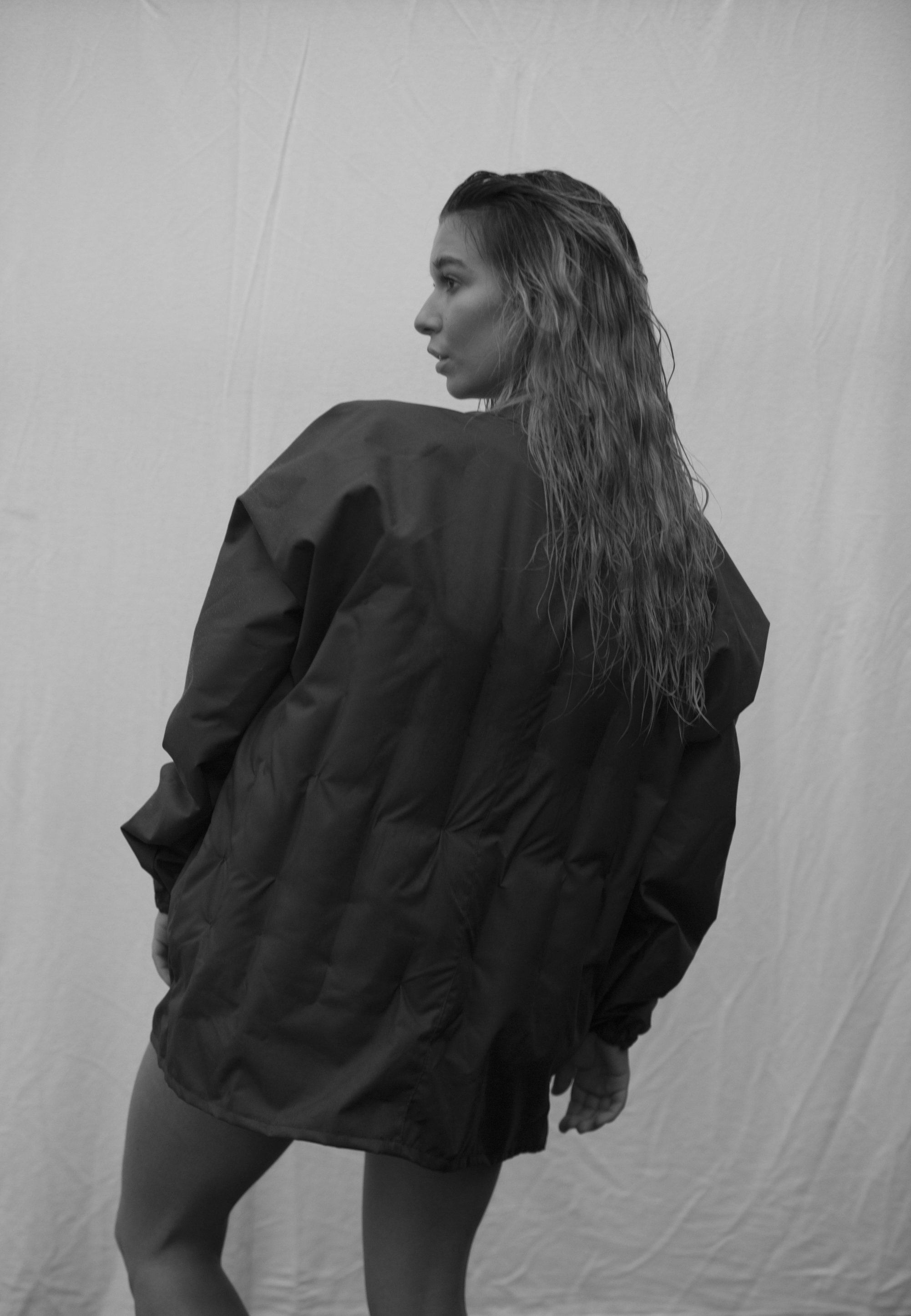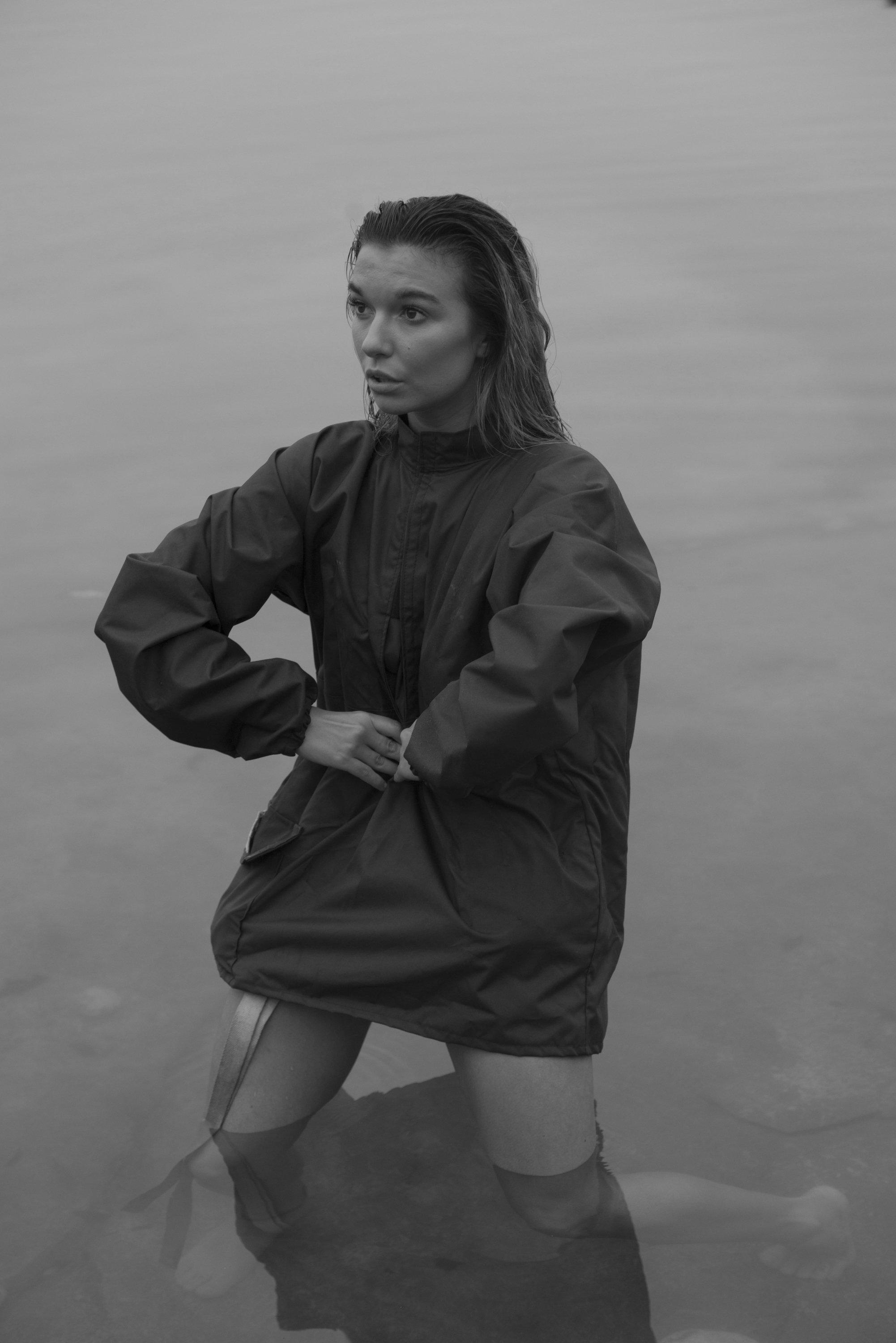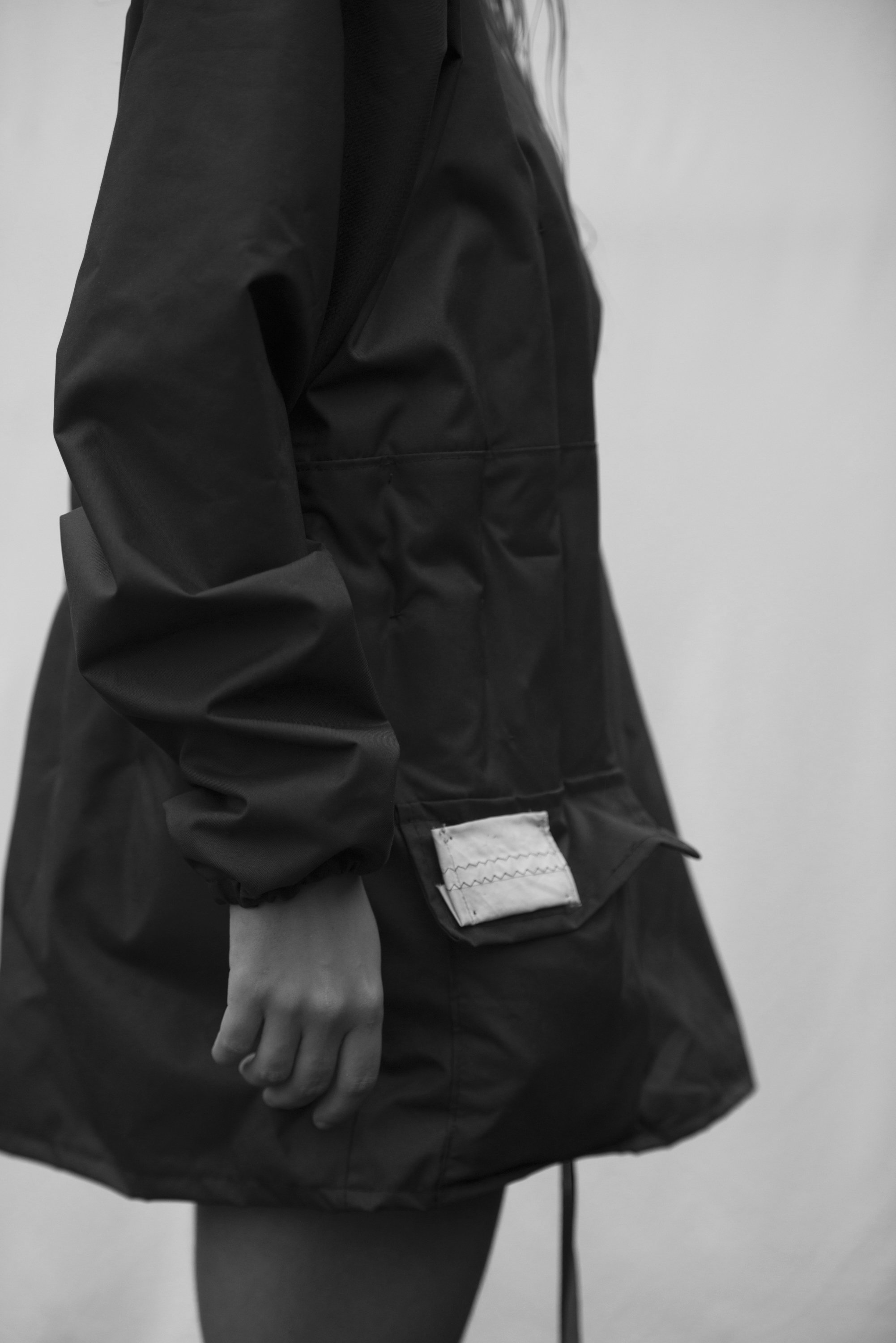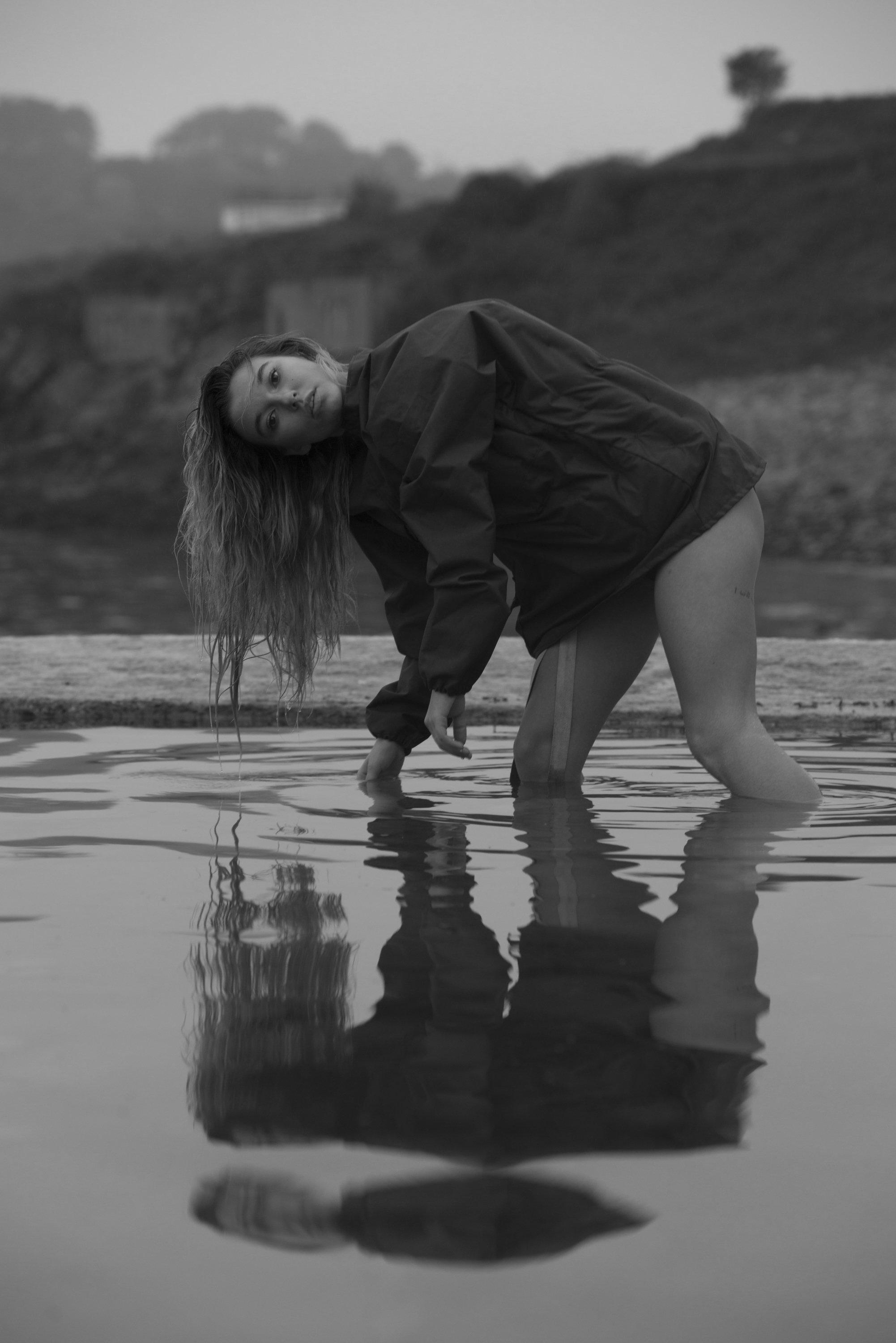The Water Jacket




In pursuit of sustainable fashion. As a semionaut how might I curate and build A design response, using critical adversarial Design theory to provoke and engage my Audience through information Experience design?
Through a rigouros creative process I created an Information Experience Design carrying 2,720 litres of water using my pre-existing water data. But three years of water is too much for a garment to hold. I thought about using a portion of this data and chose three days of water, equivalent to 7.5 litres. My audience has the opportunity to interact with a representation of three years of drinking water in weight through a wearable garment. To provoke and engage, raising awareness of how much water is used to make one cotton t-shirt. I named the water jacket Ko'l which is Uzbek for 'lake' comment on the Aral Sea’s environmental crisis.
I designed the concept based on found materials Inspired by Bourriaud's theory and critical design of Droog, a conceptual design company. I wanted to use the connections from the narrative in the case study from the Environmental Justice Foundation of the Uzbekistan people. For shape and style, I was inspired by Issey Miyake and Michiko Koshino both Japanese fashion designers.
Project Ko'l came from a process of lecture insights, critical design practice, themed research, a critical point of view, design and development. Through data collection and data curation, I chose a thematic framework of critical design theory and practice called Adversarial Design and a theme of Fashion and Sustainability. I analysed my data discoveries found through specific quantitative research methodologies. Extracting critical pre-existing data to inform my creative process and design response. My mode of communication for my design outcome and audience access point is Information Experience Design.
Project Ko’l is a garment which I have created made from recycled aesthetics of a vintage life jacket, a used sail, and a found fisherman’s smock. Inspired by the sustainable production process of reduce, reuse, remake by Patagonia. Influenced by the EJF foundations case study on 'The True Costs of Cotton' that has lead to the draining of the Aral Sea, a lake in Uzbekistan. As a consequence of this environmental catastrophe the people of Uzbek now have no lake to fish in, this was one of their primary sources of income and food.
Project Ko’l’, is communicated through Information Experience Design. Informed from my research investigation into Fashion and Sustainability. Using the pre-existing data that I discovered, "It takes 2,720 litres of water to make a t-shirt. That’s how much we normally drink over a 3-year period" (Fashion Revolution 2015: 12). I intend to evoke a provocation to stimulate and engage my audience. Sending a critical message of, “There is no such thing as cheap clothing. Someone somewhere is paying the real price” (EJF 2018).
“There is no such thing as cheap clothing. Someone, somewhere is paying the real price.”
— EJF 2018


